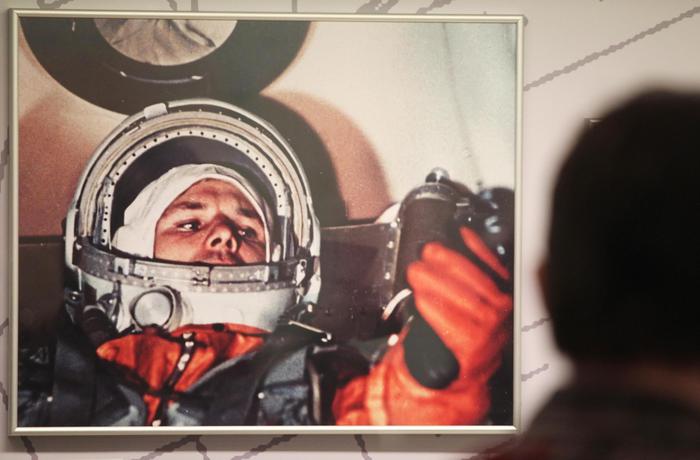'' Now on the Moon '', '' Forward to the planets '', read the signs that in 1961 welcomed Yuri Gagarin, the first man to go into space, to Moscow.
Gagarin himself was convinced that he had opened a path that would take humanity very far.
60 years after that April 12, 1961 flight and more than half a century after the last Apollo mission to the moon
, man has never been so determined to leave his footprints on the lunar soil again and is already designing a station space in the lunar orbit, Gateway, which could have a panoramic window overlooking the Moon and Earth.
Meanwhile, we look to Mars and the possibility of one day building bases there to host human missions and, in the future, human colonies.
Gagarin's flight opened a new page in the history of man and it was clear from the beginning that that road would lead far, leaving behind the years of the cold war and those of the long silence after the lunar missions.
Political tensions had prevented Gagarin from complimenting Alan Shepard
, the first American who had gone into orbit on a Mercury spacecraft not even a month after him, and for many years the Soviet Union and the United States continued their missions to the sign of the 'space race'.
From the drone on Mars to Soyuz, around the 60th anniversary of Gagarin's flight
The scenario completely changed on July 17, 1975, when an American Apollo module docked in orbit with the Russian Soyuz shuttle: for the first time an American and a Soviet crew flew together around the Earth.
Today this meeting of different nationalities is routine on the International Space Station, born from the collaboration between the United States, Russia, Canada, the European Space Agency (ESA) and Japan
.
All the astronauts who have worked and continue to work up there cannot help but notice that, seen from there, the Earth has no borders.
In orbit, then, we no longer arrive only with the missions of government agencies, but private individuals have brought a breath of fresh air.
Furthermore, the effects of space activities on Earth have become tangible, to the point of giving life to the so-called New Space Economy.
Since the beginning of the space age, more than 570 humans have admired the Earth from space.
Of these, there were just 70 women, but their number is progressively increasing
and the next footprint that a human being will leave on the lunar soil could be of a woman.
Russia, 60 years ago Yuri Gagarin was the first man in space
60 years after Gagarin's flight, we look to the return to the Moon, with the Artemis program promoted by NASA and to which ESA collaborates.
Italy also promises to play an important role and at least 16 projects for future lunar bases are being studied thanks to the agreement signed by
Thales Alenia Space (Thales-Leonardo) and the Italian Space Agency (ASI).
One concerns the Shelter, a habitable module for the lunar surface that can become a pressurized shelter for astronauts in the event of an emergency.
A telecommunications system is also planned between the various elements of the lunar base, the Gateway station and the Earth.
The feasibility of a lunar laboratory for scientific experiments
and pressurized elements for the Gateway station, such as a pressurized module for astronauts and a panoramic window to observe the Moon, Earth and deep space will also be investigated.
On Mars, whose orbit is now crowded with probes and which has three rovers active on its soil, one of the most significant tests for the future of exploration is being prepared: the possibility of controlled flight of a drone, with the small Ingenuity helicopter of the NASA arrived on the red planet on February 18 with the Perseverance rover.

